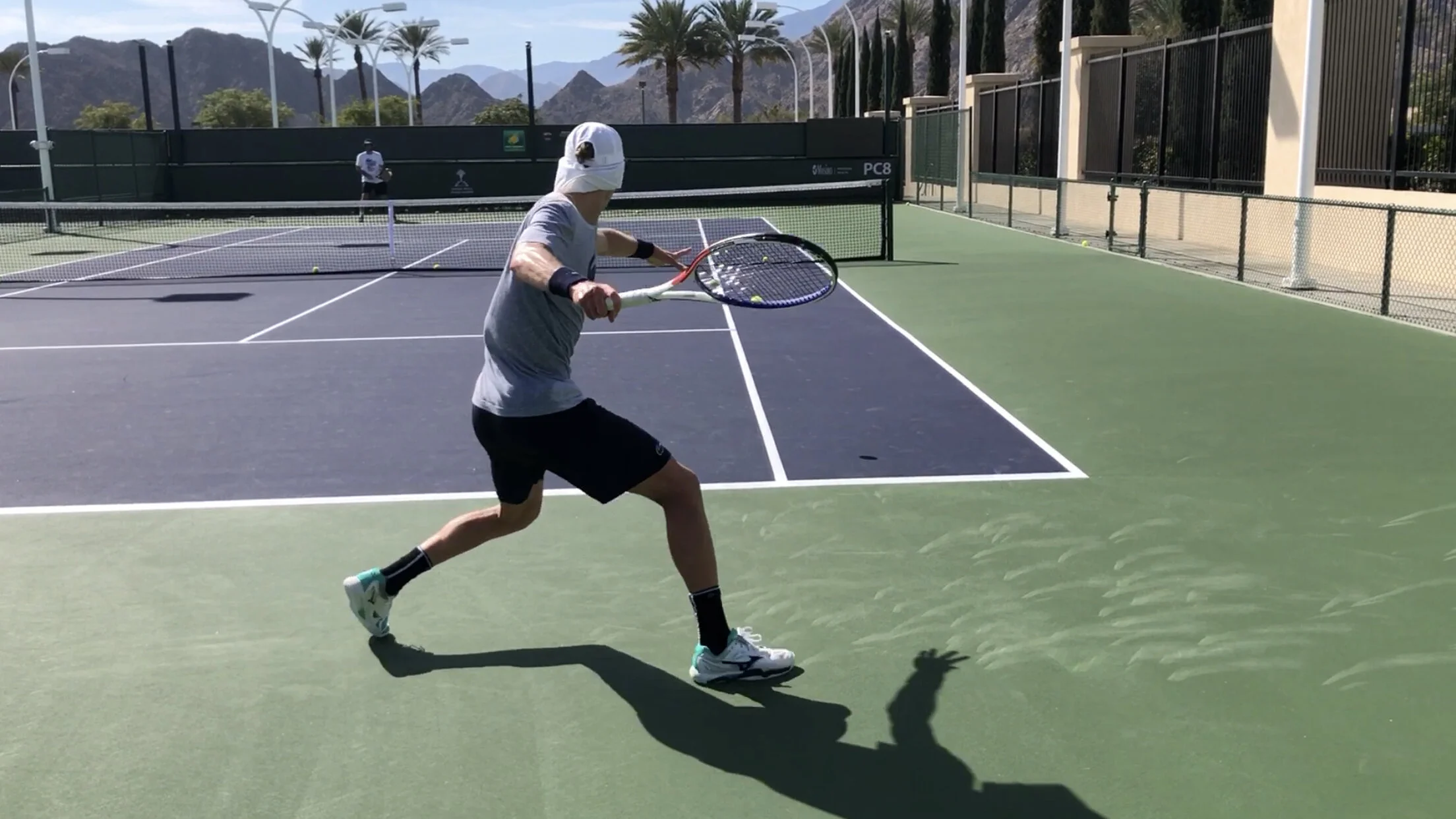The set-up is perhaps one of the most important determinants of high-quality movers - and strikers of the ball. Yet it’s a skill that is often overlooked.
Being set means having some sort of balance - whether static or dynamic - before striking the ball. When analyzing the best ball strikers in the world, what you’ll find is a common trait; unless they’re in a defensive position, they are SET before the ball bounces on their side of the court.
Here are two examples:
In both images, you’ll notice that the ball hasn’t quite hit the ground, and both Lisicki (right) and Damov (a player I coach - left) are already in a good striking position - rear leg ‘set’, ‘still’ and ‘loaded’. I’ve coached a number of juniors over the years and this is one of those qualities that many struggle with - and then they complain about hitting late, not having good timing and getting frustrated when they make mistakes.
As a player, if you’re determined to “beat the ball to the bounce”, you’ll notice something very interesting; those little adjustment steps that many coaches advocate, they begin to take shape on their own. But don’t kid yourself, making a conscious effort to be set before the bounce requires a great deal of attention and focus (and it’s physical too), which translates to better movement and preparation.
Not only that, another benefit of being set before the bounce of the ball - you’ll have more time to load the rear leg. This creates a greater impulse, allowing the lower body to initiate the swing, and adding both pace and control, to the ball (more on this in a future lesson called ‘The Strike’).
In terms of the upper-body, when you’re set with the lower-body - before the bounce - your upper body should already be in an optimal position to begin the acceleration phase of the swing.
So here’s how the sequence would go. You’ve performed a split-step (another skill we’ll explore in a future lesson), you’ve landed, and now you’re about to initiate a movement towards the ball. As you initiate that movement, you simultaneously begin prepping the upper body. That simply means that your shoulders begin to turn - which facilitates a preparation of the racquet. So when you do ‘beat the ball to the bounce’ and plant your rear foot, you’re ready to perform the swing, instead of rushing the backswing - which many players often do.
Another Approach
Since first discussing ‘being set before the bounce’, I have worked closely with elite players - Sabine Lisicki (former Wimbledon finalist), Marc Polmans (ATP career-high #116), top 100 doubles players and others.
What I’ve noticed is that, because the speed of the game has increased a lot over the years, I’ve adapted some of the ‘set before the bounce’ to be ‘set ON the bounce’.
Notice the slight variation - ON the bounce instead of BEFORE the bounce. Now, this isn’t a freebie to move with less intent. We still have to get behind the ball and the aim should be set before the bounce...but on wide balls (crosscourt exchanges and when being pushed around the court), if we can do our best to be - at the very least - set on the bounce, it still provides enough balance to send a quality shot.
Take Action
Set-Up Drill - ‘Set’ Before the Bounce
The aim of this drill is to have the feet and the racquet set and in the correct position before the ball bounces.
Start the drill from a rally position. If you are in fact set, then call ‘SET’ to reaffirm that you’ve ‘beat the ball to the bounce’. Note, do not call ‘SET’ if you’re not there (you can also say ‘NO’ under your breath, if you were not set - reaffirming that you know the distinction between set and not set). Using video can be helpful to see if you’ve actually accomplished the task.
As you can see in the videos below, we can perform this during a crosscourt rally drill as well. Once players get better, adding dimensions (hit at the peak of the bounce or aim for depth) on top of being set, can add complexity to the task.
Advanced Variation 1 - call ‘SET’ + Count
In this advanced variation, you call ‘SET’ and start counting...1, 2, 3 etc. The speed of counting doesn’t matter, what matters is that players try to get prepared so quickly and early that they have time to call ‘set’ and begin counting (stop counting at the moment the ball impacts the racquet).
Advanced Variation 2 - w/ Random Shots
Another way to make this tougher is by asking your partner to stand in one corner (FH or BH side) and getting them to hit anywhere in the court. Your job is to get track the ball and be set as early as possible (before the bounce is ALWAYS the goal).
NOTE - These drill can be very physically demanding if you’re performing them at 100% focus, effort and intensity. Take time between rallies to rest - 15 seconds would be the minimum recommendation - so that each rally can be done with the same desire and intensity to ‘beat the ball’. The only time you would not rest afterwards is if you’ve made an error within the 1st couple shots.



